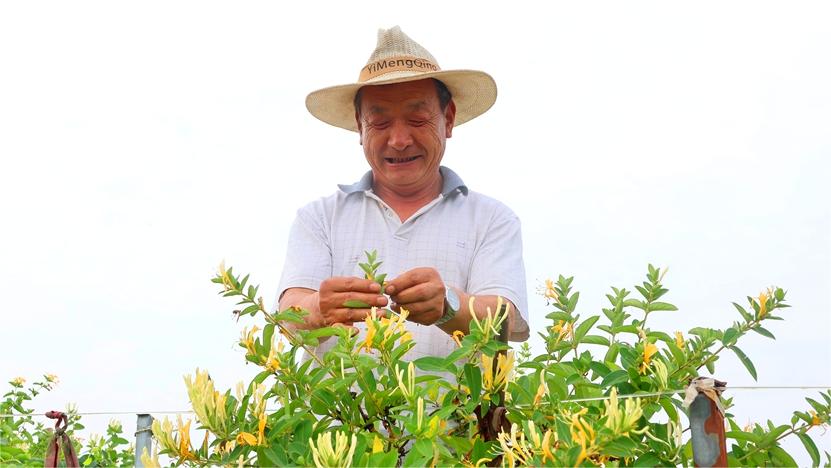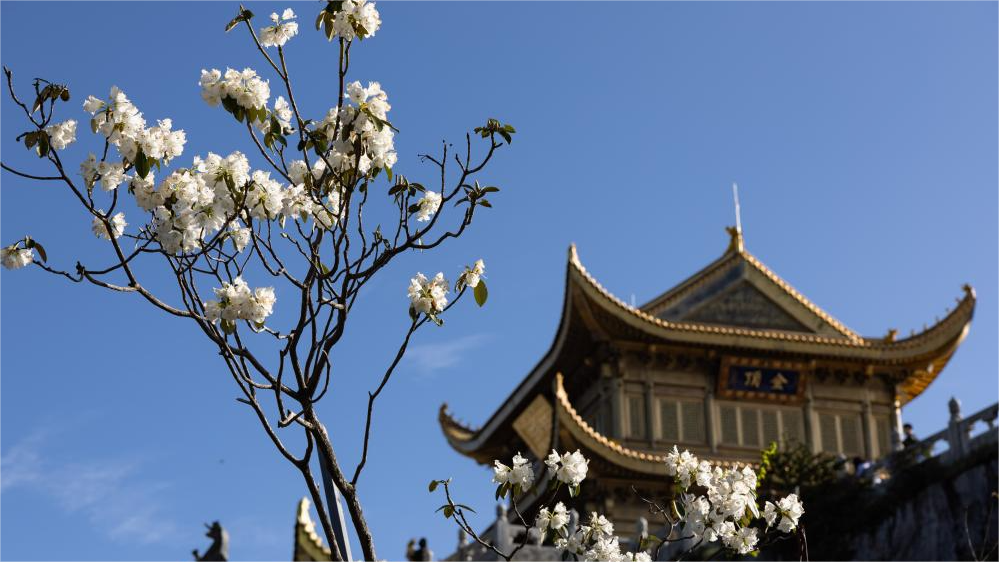Space-bred seeds enter Chinese people's daily lives
Space-bred seeds have entered the daily lives of Chinese people, thanks to China's remarkable achievements in space breeding.
With the return of the Shenzhou-17 manned spacecraft on April 30, a new batch of scientific experimental samples from China's space station arrived on Earth, including seeds for breeding experiments.

Exhibitors showcase seeds at the 30th China Beijing Seed Industry Conference held in Tongzhou district, Beijing, Sept. 11, 2023. Over 300 seed enterprises from 22 provincial regions in the country showcased over 2,300 varieties of seeds, including space-bred ones, at the conference. (Photo/Chen Xiaogen)
China has conducted over 3,000 experiments on space breeding, and developed more than 240 approved varieties of staple crops, and over hundreds of new varieties of vegetables, fruits, trees, grasses, and flowers. Space breeding increased grain production by over 2 billion kilograms annually in the country and generated direct economic benefits exceeding 100 billion yuan ($14.1 billion).
"In space breeding, also referred to as aerospace breeding, seeds are sent on a spacecraft like a retrievable satellite or a manned spaceship to space, where they are exposed to specific conditions such as cosmic radiation, microgravity, and high vacuum to induce genetic mutations," said Liu Luxiang, Party secretary of the Institute of Crop Sciences under the Chinese Academy of Agricultural Sciences (CAAS) and chief scientist of China's space breeding program.
"After the seeds return to the Earth, we pick out the beneficial mutations that can be passed on to breed new plant varieties with high quality, high yields, and multiple resistances," he added.
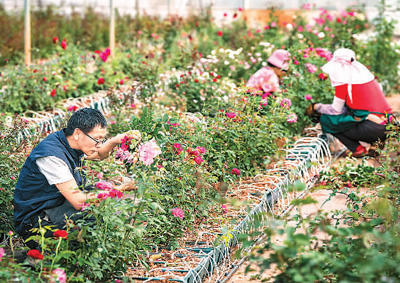
Farmers tend to space-bred roses at a rose demonstration base in Anning city, southwest China's Yunnan Province, October 2023. (Xinhua/Hu Chao)
Compared to traditional plant breeding techniques, the biggest advantage of space breeding is that it can create germplasm resources with greater performances such as higher yield, shorter growth period, and better resistance to diseases in a relatively short period of time.
Cultivating a mature variety typically takes eight to 10 years. Throughout the lengthy breeding process, the seeds must undergo rigorous testing for yield, resistance, quality, and so on. The occurrence of a problem at any stage can potentially undo all previous efforts.
"A large number of strains are eliminated during tests, leaving only a very small proportion classified as space seeds, certified or acknowledged by professional institutions," Liu noted.
"From food crops and vegetables to fruits, flowers, and forage grasses, a whole batch of new varieties developed through space breeding has already entered the market and become part of our daily lives," Liu said.
By employing space breeding technology, China has managed to produce a variety of new strains in wheat, rice, corn, soybean, oilseed rape, peanut, cotton, tomato, pepper, cucumber, forage grasses, trees, and flowers, he added.
For instance, Luyuan 502 is a high-yielding and high-quality wheat variety jointly developed by the Institute of Crop Sciences under the CAAS and the Institute for Application of Atomic Energy under the Shandong Academy of Agricultural Sciences. It is the first and currently most widely grown space-bred crop variety in China.
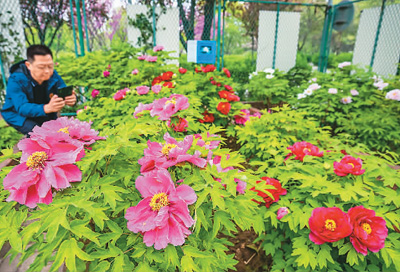
A tourist takes photos of blooming space-bred peonies in Luoyang city, central China's Henan Province, April 10, 2024. (People's Daily Online/Li Weichao)
"It solved the problem of lodging encountered during the cultivation of wheat varieties with heavy ears. It has been cultivated on 100 million mu (6.7 million hectares) of land," said Liu.
In 2021, Hangmai 802, a high-yielding and high-quality wheat variety, was certified in north China's Hebei Province. It features outstanding salt tolerance, strong resistance to various diseases, and adaptability to diverse conditions.
In 2013, the Academy of Agricultural Sciences of Fuyang City in east China's Anhui Province sent 100 grams of a self-developed wheat variety into space. After several rounds of field screening, the academy finally identified an excellent strain three years later, which won the province's approval for mass planting in 2021.
The planting area of the new wheat variety totaled 400,000 mu in the autumn of 2023, covering the provinces of Anhui, Henan, and Jiangsu, said Feng Jiachun, director of the wheat research and development center of the academy.
In 1987, China's ninth recoverable satellite sent crop seeds into space, marking the start of the country's space breeding journey.
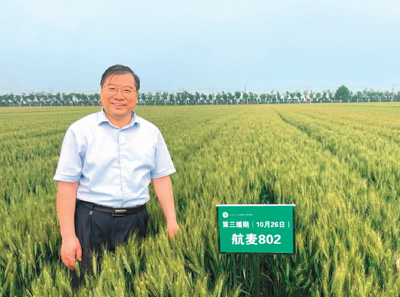
File photo taken in 2023 shows Liu Luxiang, chief scientist of China's space breeding program, checking on the growth of Hangmai 802, a high-yielding and high-quality wheat variety, at an experimental base in Shijiazhuang, capital of north China's Hebei Province.
In 2006, China launched the Shijian-8 satellite, the world's first dedicated specifically to seeds, carrying over 200 kilograms of seeds of grain, cotton, oil crops, vegetables, fruits, microorganism, and coarse cereals.
In recent years, China has made significant strides in research on space mutagenesis mechanisms, seeing outstanding achievements in developing new germplasm resources, the number of new space-bred varieties, and the cultivation area of these varieties.
By developing extravehicular equipment and technology for space radiation biology, breeding experts can engage in space-induced mutation breeding and thereby establish a new space breeding system based on China's space station, Liu said.
He also suggested developing a diverse range of new varieties, taking the lead in innovation in the seed industry, and integrating space breeding with new business models to facilitate the development of the space economy.
Photos
Related Stories
- Chinese team improves animal genomic breeding technology
- Photo story: university graduate devoted to cattle breeding in hometown
- First phase of national seed breeding base in S China’s Hainan completed
- First artificial breeding of loggerhead turtles in China
- Alligators at Anhui Chinese alligator national nature reserve greet breeding season
- Horse breeding becomes pillar industry of Zhaosu in China's Xinjiang
- Silkworm breeding in S China
Copyright © 2024 People's Daily Online. All Rights Reserved.







